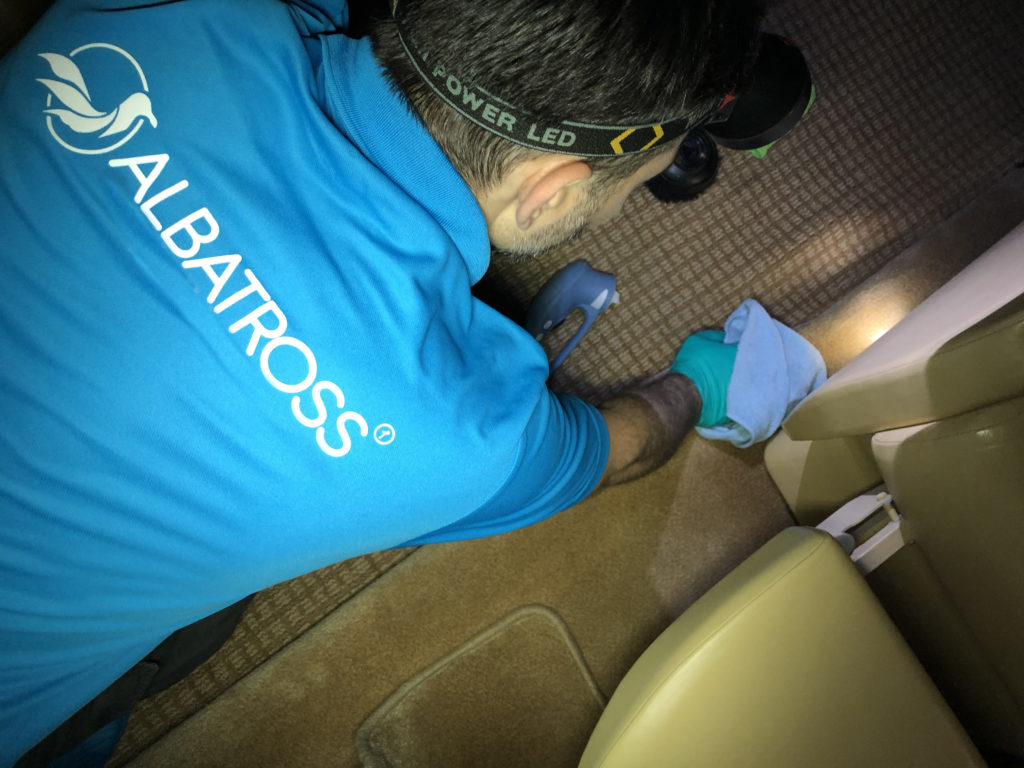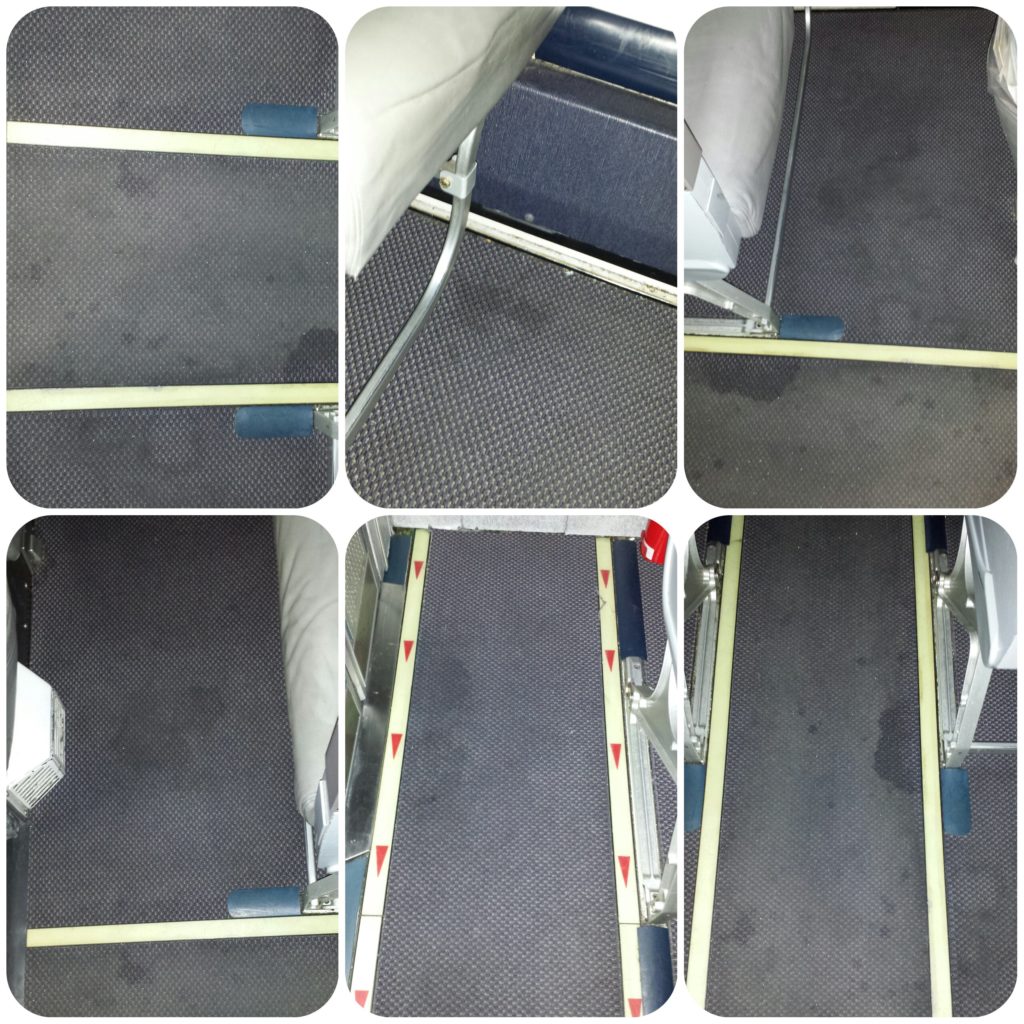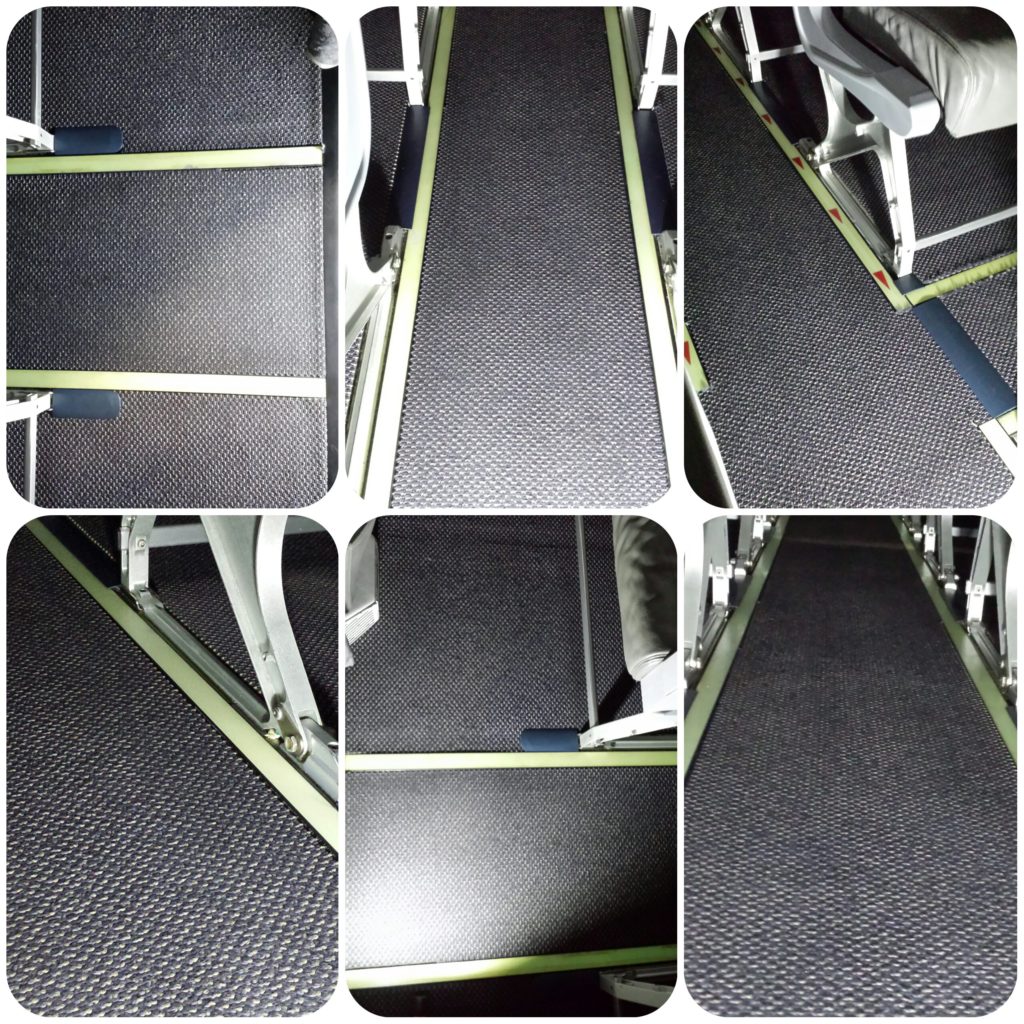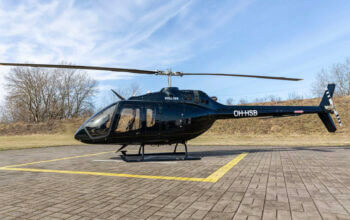Estimated reading time 5 minutes, 30 seconds.
With commercial aircraft holding up to 350 passengers per flight, and many passenger jets serving multiple routes per day, the inside of a plane can become a hotbed of germs.

It’s not just aircraft operators who are starting to think seriously about the cleanliness of an aircraft cabin — a recent Marketplace episode on CBC has brought the issue to public attention. The perception has shifted, and airlines can no longer get away with a mindset that “looking clean” is the same as “being clean.”
Albatross Aircraft Detailing Inc., a Toronto-based company, has devised a solution and a unique technology which solves the problem of filthy airplanes.
“We just started creating the different techniques and solutions; for example, carpet cleaning for aircraft,” said Elena Klimenko, Albatross co-founder and COO. “So many companies … just throw [carpets] away when it’s dirty and has been on the aircraft for a while.
“For them it’s easier to just throw them out and replace them. When we saw that, we just came out with the solution on how to solve this problem and how to offer it to the market. Some of our techniques involve low moisture carpet cleaning, which allows us to clean carpets on board of the aircraft, and it will take about an hour to clean, and about 40 minutes to dry.”
Albatross’ disinfection procedure targets the tough spots in which bacteria thrive, but is tailored to each aircraft and also ensures that the aircraft stay bacteria-free for the long-haul.
“When we started talking to customers, they were so impressed, like it was some kind of new thing. We just continued to come up with solutions for different problems in aircraft grooming,” explained Klimenko.

“So we get together to show them the machines and solutions that we find for the problems. Our company is all about listening to the customer and what they need, and to find a solution,” she added.
Bacteria can be anywhere on an aircraft but there are certain spaces in which they thrive, and specific locations where the density and variety of bacteria is significantly higher and can reach dangerous levels.
Carpets, headrests, bathroom handles and food trays are some of an aircraft’s dirtiest spots. But even armed with that knowledge, what can companies do to improve their hygiene processes?
“That always depends on the project. When we have some projects to get done, we just do it,” said Klimenko. “It depends on the problem and on the type of aircraft, but we always talk about what kind of results a customer wants to see in every particular situation.”

As turnaround time is critical, and spending too much time cleaning can be expensive, it’s important that the cleaning operation is efficient and gets to the heart of the disease-spreading bacteria. Modern cleaning techniques such as Albatross’ Advanced Wrap Around Application Technology gives technicians a precision tool to target the most contaminated areas of the aircraft and clean them with an aviation-approved disinfection solution.
These are the types of services that Klimenko believes set Albatross apart from the competition.
“I think we are the G.T.A.’s specialist in this kind of service,” she told Skies. “Because when we talk to our customers, they don’t have anything similar.”
But Albatross’s process doesn’t end there. Following the disinfection procedures, hygiene monitoring tests are used to evaluate the distribution and re-growth of bacteria. This monitoring is important, as it means that airlines can adapt practices to suit every individual aircraft and to most efficiently deploy resources. Ongoing monitoring can inform future cleaning practices, making sure that the frequency of cleaning is correct and that the right locations in the aircraft are targeted to combat the spread of disease. This kind of sustained quality control has earned Albatross glowing customer reviews, according to Klimenko.
“We really care about our quality. When we started servicing the Porter fleet, mechanics came to us and said, ‘Wow, how did you do that?’ ” she said. “They were like, ‘I can eat here on the floor.’ “








